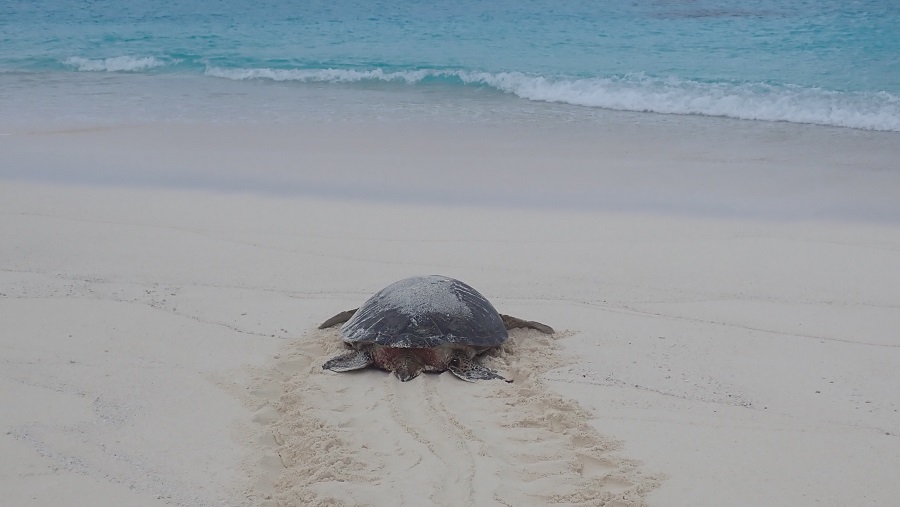Monitored wildlife populations* – mammals, birds, amphibians, reptiles, and fish – have dropped 69% on average since 1970, according to WWF’s Living Planet Report (LPR) 2022, highlighting the stark outlook of the state of nature and urgently warns governments, businesses, and the public to take transformative action to reverse the destruction of biodiversity.
With its biggest dataset yet, featuring almost 32,000 populations of 5,230 species, the Living Planet Index (LPI), provided within the report by ZSL (Zoological Society of London), shows it is within tropical regions that monitored vertebrate wildlife populations are plummeting at a particularly staggering rate. WWF is extremely concerned about this trend given that these geographical areas are some of the most biodiverse in the world. In particular, the LPI data reveals that between 1970 and 2018, monitored wildlife populations in Latin America and the Caribbean region have dropped by 94% on average.
In less than a lifetime, monitored freshwater populations have fallen by an average of 83%, the largest decline of any species group. Habitat loss and barriers to migration routes are responsible for about half of the threats to monitored migratory fish species.
Commenting on the findings, Marco Lambertini, Director General of WWF International, said: “We face the double emergencies of human-induced climate change and biodiversity loss, threatening the well-being of current and future generations. WWF is extremely worried by this new data showing a devastating fall in wildlife populations, in particular in tropical regions that are home to some of the most biodiverse landscapes in the world.”
World leaders are due to meet at the 15th Conference of Parties to the Convention of Biological Diversity (CBD COP15) this December for a once-in-a-decade opportunity to course-correct for the sake of people and the planet. WWF is advocating for leaders to commit to a ‘Paris-style’ agreement capable of reversing biodiversity loss to secure a nature-positive world by 2030.
“At the COP15 biodiversity conference this December, leaders have an opportunity to reset our broken relationship with the natural world and deliver a healthier, more sustainable future for all with an ambitious nature-positive global biodiversity agreement,” said Dr Lambertini. “In the face of our escalating nature crisis, it’s essential this agreement delivers immediate action on the ground, including through a transformation of the sectors driving nature loss, and financial support to developing countries.”
Some of the species’ populations captured in the LPI include the Amazon pink river dolphin population, which saw populations plummet by 65% between 1994 and 2016 in the Mamirauá Sustainable Development Reserve in the Brazilian state of Amazonas; the eastern lowland gorilla, whose numbers saw an estimated 80% decline in DRC’s Kahuzi-Biega National Park between 1994 and 2019; and South and Western Australian sea lion pups, which plunged by two-thirds between 1977 and 2019.
Dr Andrew Terry, Director of Conservation and Policy at ZSL, said: “The Living Planet Index highlights how we have cut away the very foundation of life and the situation continues to worsen. Half of the global economy and billions of people are directly reliant on nature. Preventing further biodiversity loss and restoring vital ecosystems has to be at the top of global agendas to tackle the mounting climate, environmental and public health crises.”
Around the world, the report indicates that the main drivers of wildlife population decline are habitat degradation and loss, exploitation, the introduction of invasive species, pollution, climate change and disease. Several of these factors played a part in Africa’s 66% fall in its wildlife populations over the period, as well as Asia Pacific’s overall 55% drop.
The LPR report makes clear that delivering a nature-positive future will not be possible without recognising and respecting the rights, governance, and conservation leadership of Indigenous Peoples and local communities around the world.
Flor Delicia Ramos Barba said she has felt the loss of nature in the Indigenous community of Santo Corazon in Santa Cruz, Bolivia, where she lives. “The roar of the jaguar could be heard near the community three years ago, but not anymore. Compared with my childhood, I’ve witnessed a big difference. The animals in the community are now gone. We also feel this lack in the rivers. The people used to go fishing to support their families, but now there are no fish. Tree species have also been disappearing.
“As a community we have become aware of the difficulties that come our way year after year. The conservation of our territory is important to us.”
The report argues that increasing conservation and restoration efforts, producing and consuming food in particular more sustainably, and rapidly and deeply decarbonising all sectors can mitigate the twin crises. The authors call on policymakers to transform economies so that natural resources are properly valued.
“The Living Planet Report contains shocking figures directly related to our interlinked climate and biodiversity crises and in response we must see transformative systems change if we’re to halt and reverse nature loss and secure a flourishing future for people and nature,” said Dr Lambertini. “Government leaders must step up at COP15. The world is watching.”
Source: WWF Press Release
If you would like to read the report, you can do so HERE








